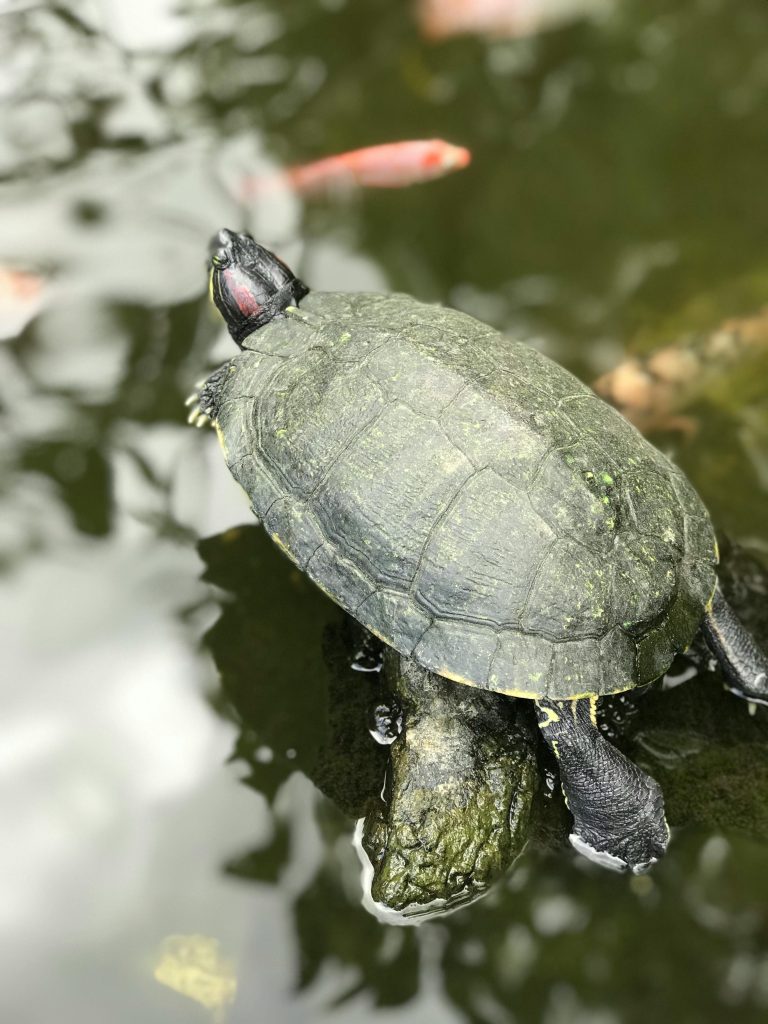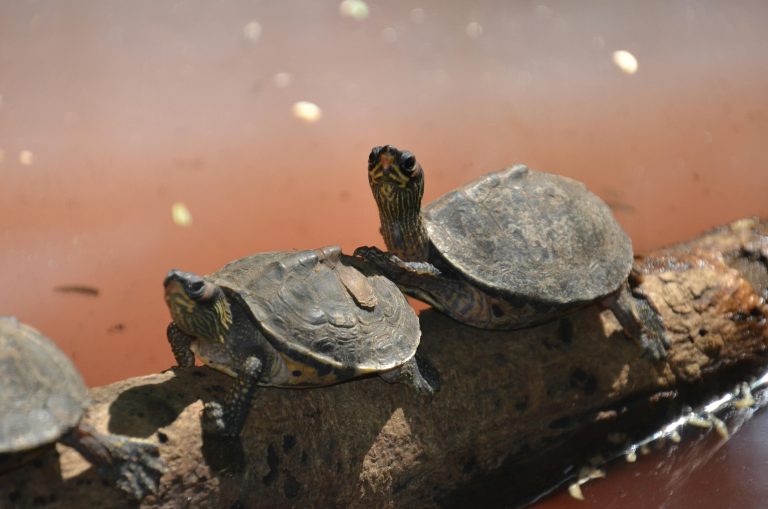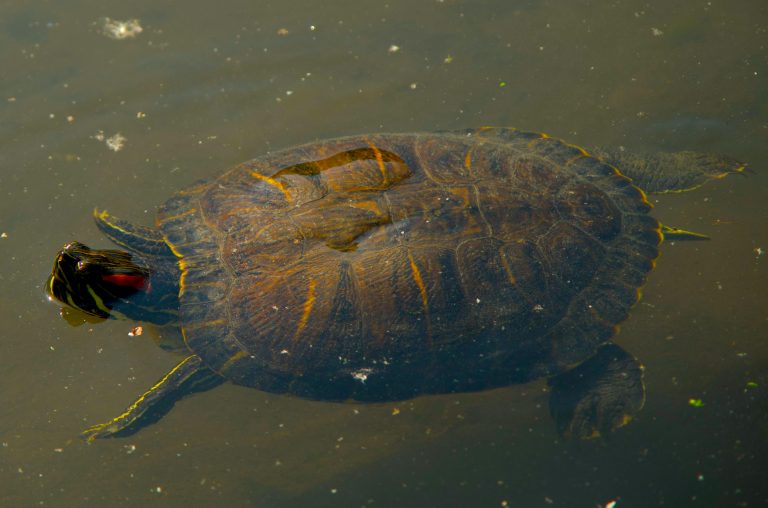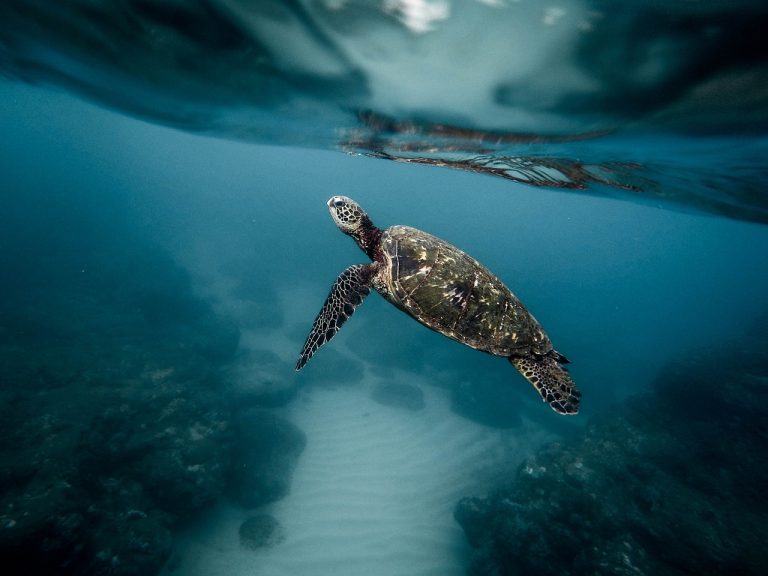Can Turtles Cross Breed?
Turtles, with their long history spanning millions of years, have become incredibly popular as pets. The high demand for these fascinating creatures has led breeders to refine their reproduction methods and even experiment with hybridization to create new and desirable turtle varieties. While many animal species can successfully interbreed, the question arises: can turtles do the same?
While some turtle species have been known to produce offspring through cross-breeding with closely related species, such occurrences are relatively rare in the wild. Most turtles tend to mate within their own species, limiting the instances of hybridization.
In this article, we delve into the intriguing topic of turtle mating habits, exploring whether turtles possess the ability to interbreed. We’ll discuss various types of turtles and their unique habitat requirements. Additionally, we’ll examine the potential for hybridization resulting from turtle mating and offer tips on successfully breeding these remarkable creatures. So, if you’re curious to learn more, keep reading!

What Is Cross Breeding?
Cross-breeding, the practice of mating two distinct species or types of plants or animals to produce offspring with desired traits, is a well-known technique in the world of agriculture and animal breeding.
In the realm of animals, cross-breeding is utilized to create hybrid species that inherit a blend of characteristics from both parent species. This process involves carefully selecting desirable traits from different species and combining them to produce offspring with specific attributes.
While the practice of mating different species of turtles together is relatively new, there have been some instances of success in producing hybrid turtles. However, this process remains largely experimental.
To initiate cross-breeding among turtle species, breeders must first carefully select two species capable of reproducing successfully with each other. They then create an optimal habitat and environmental conditions for the hybrid offspring to thrive.
Although the exact traits expressed in the hybrid offspring cannot be predetermined, they typically exhibit a combination of characteristics from both parent species.
Breeding different species of turtles presents several challenges, including finding compatible species and understanding the intricacies of the breeding process. Additionally, hybrid turtle offspring may not be as robust as their parent species and could experience health issues or reduced lifespan.
Before embarking on cross-breeding experiments, it’s crucial to fully comprehend the risks and complexities involved in the process.
What Is Hybridization Of Turtles?
Turtles from different species have the ability to mate or cross-breed with each other, resulting in a phenomenon known as hybridization.
Hybridization occurs when animals from different species cross-breed and produce offspring. However, in many cases, these offspring are infertile, meaning they are unable to reproduce and have offspring of their own.
Can Red-Eared Sliders Breed With Painted Turtles?
It is indeed possible for painted turtles and red-eared slider turtles to interbreed and produce offspring. In their natural habitats, these two species often coexist, and it’s not uncommon to spot them sharing sunbathing spots on rocks or logs.
However, while mating between these species is possible, there’s no guarantee that the resulting offspring will thrive independently. In fact, it’s highly likely that any offspring produced from the breeding of a painted turtle and a red-eared slider will be sterile and unable to reproduce.
Before attempting to breed these turtles, it’s crucial to ensure certain factors.
What To Consider Before Cross-Breeding Painted Turtles And Red-Eared Sliders?
As you’re likely aware, caring for different species of turtles can involve vastly different needs and requirements.
Attempting to house two different turtle species in the same environment can lead to discomfort or even stress for one or both turtles. Let’s delve into some considerations you’ll need to keep in mind:
- Habitat: While both types of turtles are aquatic, their natural habitats differ significantly. Painted turtles prefer slow-moving water with abundant vegetation, whereas red-eared slider turtles thrive in areas with a faster current. Providing a suitable environment for both species in the same enclosure can be challenging.
- Basking Spot: Each species has its own preferred basking temperature. Painted turtles enjoy basking spots with temperatures between 85 and 88 degrees Fahrenheit, while red-eared sliders prefer slightly warmer temperatures ranging from 90 to 92 degrees.
- Size: Painted turtles and red-eared sliders vary in size, with painted turtles typically reaching lengths of 4 to 6 inches and red-eared sliders growing larger, up to 8 to 12 inches. This size difference can affect their ability to breed successfully, so it’s important to house turtles of comparable sizes together.
- Health Considerations: While painted turtles and red-eared sliders are capable of mating and producing offspring, it’s important to remember that they are not the same species. Additionally, both species can carry various diseases and pathogens. Offspring produced from interbreeding may be more susceptible to health issues. Successful mating between different turtle species requires both individuals to be in good health, comparable in size, and housed in appropriate habitats.
Is Breeding A Painted Turtle With A Red-Eared Slider A Good Idea?
Both painted turtles and red-eared sliders belong to the family Emydidae, allowing them to interbreed despite being distinct species. However, just because they can reproduce doesn’t mean it’s advisable.
While both species are capable of producing offspring, it’s generally not recommended to encourage breeding between them. It’s in the best interest of both turtles to keep them separate, ensuring they can lead healthy lives and produce viable offspring.
If you’re contemplating breeding these turtles, it’s strongly advised to consult with a qualified veterinarian. Seeking professional guidance will help ensure the safety and well-being of the turtles involved.

Can Red-Eared Sliders Breed With Yellow-Bellied Sliders?
There are numerous species of turtles, and while they are capable of mating with each other, not all pairings will lead to offspring.
For example, red-eared sliders and yellow-bellied sliders can mate, but their union typically does not produce viable offspring.
This is because they belong to different species of turtles. Their genetic makeup is too distinct for successful reproduction, despite their ability to mate.
Can Snapping Turtles Breed With Painted Turtles?
While it is indeed possible for painted turtles and snapping turtles to mate and produce offspring, as they are both members of the same genus, Chrysemys, this practice is not typically recommended.
The resulting offspring from such a pairing often have a high likelihood of being sterile, meaning they are unable to reproduce themselves. As a result, breeding painted turtles and snapping turtles together is generally discouraged.
Can Red-Eared Sliders Breed With Other Turtles?
Red-eared sliders are renowned for their prolific reproductive capabilities. They have a high reproductive rate and are not picky about their mates, readily reproducing with turtles of similar sizes or comparable species.
This behavior extends beyond other red-eared sliders and may include various species of freshwater turtles such as cooters, mud turtles, and soft-shell turtles.
As a result of these indiscriminate mating behaviors, the offspring produced often exhibit a mix of traits from both parent species. This can make it challenging to distinguish between the different progeny.
Can You Cross Breed Box Turtles?
While it is technically feasible to breed box turtles with other species, the resulting offspring may not meet your expectations. Hybrids often display abnormalities and may even be sterile.
If you’re considering crossbreeding box turtles, it’s crucial to raise the young of the two species together. By doing so, you can prevent them from mating with other turtles, thereby avoiding potential complications.
How To Successfully Cross Breed Turtles?
Here are some helpful hints for the turtle breeding process:
- Raise Both Sexes Together: To increase the likelihood of successful breeding, it’s beneficial to keep male and female turtles together from a young age. This can be facilitated with the guidance of an experienced turtle breeder.
- Provide Suitable Nesting Spaces: Female turtles require nesting areas to lay their eggs. Providing nesting boxes or designated nesting spots can aid in the breeding process.
- Avoid Separation for at Least a Year: After the female turtle lays her eggs, keeping both turtles together in a habitat with a nesting area for about a year allows them to form strong bonds and mate successfully. Avoid forcing contact between them during this period to prevent hostility.
- Consult a Responsible Breeder: If you’re inexperienced in turtle breeding, seeking advice from a knowledgeable breeder is advisable. Breeding turtles can be challenging and may require expert guidance.
- Be Cautious with Dominant Turtles: Breeding turtles with significant size or dominance differences can lead to aggression. Ensure the turtles can coexist peacefully and monitor their interactions closely.
- Learn Mating Times: Research the mating seasons of different turtle species to optimize breeding opportunities. Timing is crucial for successful mating.
- Observe Captive Turtle Habits: Watch the behavior of captive turtles closely, especially during mating season. Dominance and compatibility issues may arise, requiring careful monitoring.
- Ensure Turtles’ Health: Hybrid turtles may be more prone to health issues, so prioritize their well-being. Consult a qualified veterinarian for expert care and guidance in maintaining their health.
Is It Possible For A Tortoise And A Turtle To Have Offspring?
It’s important to note that turtles and tortoises cannot produce fertile offspring together. Attempting to mate turtles, even with other reptiles, can lead to serious health issues for the offspring.
Therefore, caution is strongly advised if you are considering breeding your turtles or attempting to crossbreed them with other reptiles. It’s essential to prioritize the well-being and health of the animals involved.
Before You Go…
The consequences of turtle hybridization can be significant. Offspring resulting from crosses between two species may inherit genetic abnormalities, which can make them less desirable as pets compared to purebred turtles.
If you are considering mating turtles within the same species or attempting to crossbreed different species, it’s important to carefully consider these factors and the potential impact on the health and well-being of the offspring.

![Turtle Vs. Tortoise Vs. Terrapin [Difference Chart]](https://spreadhapiness.com/wp-content/uploads/2024/04/terrapin-1-768x576.jpg)



